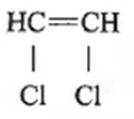Explain the following:
i) Beta-1,3-diene gives 1,2- and 1,4-addition products.
ii) Addition of HBr to H2C=CHCH2C≡CH gives CH3CHBrCH2C≡CH.
iii) Alkenes in decreasing order of reactivity towards electrophilic addition.
a) CICH2CH=CH2
b) (CH3)2C=CH2
c) CH3CH=CH2
d) H2C=CHCl ltbgt iv) Stereochemical structure of the reaction product of Br2 with a) cis-2-butene and b) trans-2-butene.
v) Why alkynes are generally less reactive than alkenes shorter than that of n-butane.
vi) The central carbon-carbon bond in buta-1, 3-diene is shorter than that of n-butane.
vii) Arrange following alkenes in decreasing order of stability towards acid-catalysed hydrocarbons.
a) 1-phyenyl-1-butene, 1-phenyl-2-phenyl-2-butene
b) 2-methylpropene, cis-2-butene, trans-2-butene
c) 1-hexene, 2-methyl-1-pentene, 2-hexene.
i) N//A
ii) The addition occurs at double bond because isolated double bond is more reactive than an isolated triple bond in electrophilic additions.
iii) Electron releasing alkyl groups make pi-bond more electron rich and more reactive. While electrron with-drawing halogen atoms make the pi-bond more electron poor and less reactive. The order is:
b) Two R gt (C ) one R gt(a) one R and a Cl gt (d) Cl on a double bonded carbon.
iv) 2,3-Dibromobutane a) racemic b) meso.
v) The reaction of alkyne or alkene with elecrophilic reagent proceeds through the formation of carbocation. Since the alkyl carbocation from the alkene group is more stable than the vinyl carbonation from alkyne group, the ΔH for its formation is less in case of alkene and hence alkene reacts faster than alkyne.
vi) Buta-1.3-diene (H2C=CH−CH=CH2) has sp2−sp2C−C bond length, while n-butane has sp3−sp3C−C bond length. More s character in hybridisation, lesser is bond length.
vii) a) 2-phenyl-2-butene gt 1-phenyl-2-butene gt 1-phenyl-1-butene.
c) 2-methyl-1-pentene gt 2-hexanegt1-hexene.
Topper's Solved these Questions
- UNSATURATED HYDROCARBONSBOOK - OP TANDONCHAPTER - UNSATURATED HYDROCARBONSEXERCISE - PROBLEMS FOR PRACTICE
17 Videos
- UNSATURATED HYDROCARBONSBOOK - OP TANDONCHAPTER - UNSATURATED HYDROCARBONSEXERCISE - Match type
1 Video
- UNSATURATED HYDROCARBONSBOOK - OP TANDONCHAPTER - UNSATURATED HYDROCARBONSEXERCISE - SINGLE INTEGER ANSWER TYPE QUESTIONS
10 Videos
- STOICHIOMETRY (CHEMICAL FORMULAE AND EQUATIONS )BOOK - OP TANDONCHAPTER - STOICHIOMETRY (CHEMICAL FORMULAE AND EQUATIONS )EXERCISE - SELF ASSESSMENT
11 Videos
Similar Questions
The decreasing order of reactivity towards electrophilic addition (e.g. addition of HX,X2, etc.) of the following is :
I.CH≡CH
II.CH2=CH2
III. H2C=CH−Cl
IV
View SolutionThe increasing order of reactivity of the following halides for the SN1 reaction is
I.CH3CH(CI)CH2CH3
II.CH3CH2CH2Cl
III. p.−H3CO−C6H4−CH2Cl
View Solution
Knowledge Check
The correct order of reactivity towards electrophilic addition reaction :
(II) CH3−C≡CH, (II) CH2=CH2

 AII>I>IV>IIIBIII>I>IV>IICI>III>IV>IIDIII>IV>II>I
AII>I>IV>IIIBIII>I>IV>IICI>III>IV>IIDIII>IV>II>IThe decreasing order of reactivity towards electrophilic addition (e.g. addition of HX,X2, etc.) of the following is :
I.CH≡CH
II.CH2=CH2
III. H2C=CH−Cl
IV A(II)>(I)>(III)>(IV)B(I)>(II)>(III)>(IV)C(IV)>(III)>(I)>(II)D(IV)>(III)>(II)>(I)
A(II)>(I)>(III)>(IV)B(I)>(II)>(III)>(IV)C(IV)>(III)>(I)>(II)D(IV)>(III)>(II)>(I)Decreasing order of reactivity in Williamson synthesis orf the following .
Me3CCH2Br
CH3CH2CH2Br
CH2=CHCH2CI
CH3CH2CH2CI .AIIIgtIIgtIVgtIBIgtIIgtIVgtIIICIIgtIIIgtIVgtIDIgtIIIgtIIgtIV
Correct order of reactivity -
(A) CH2=CH2>CH3−CH=CH2>(CH3)2C=CH2
(B) CH2=CH2>CH3−CH=CH2<(CH3)2C=CH2
(C) CH2=CH2<(CH3)2C=CH2<CH3−CH=CH2
(D) CH3−CH=CH2<CH2=CH2<(CH3)2C=CH2
View SolutionS-I: Addition of HBr to HC≡CCH2CH=CH2 give HC=CBrCH2CH=CH2
S-II: A triple bond is more reactive than a double.
View SolutionCH3−C(a)≡C−CH2−CH=(b)CH2
Reactivity toward electrophilic addition reaction.
View SolutionWhat will be the increasing order of the stability of the following alkenes?
i) H2C=CH2
ii) CH3CH=CH2
iii) CH3CH2CH=CH2
iv) (CH3)2CHCH=CH2
v) (C)CH=CH2
View SolutionThe increasing order of reactivity of the following halides for the SN1 reaction is
I.CH3CH(CI)CH2CH3
II.CH3CH2CH2Cl
III. p.−H3CO−C6H4−CH2Cl
View Solution
